 |
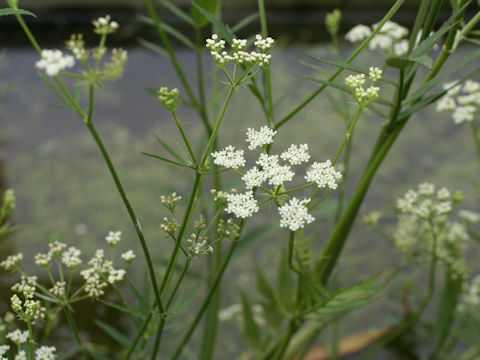

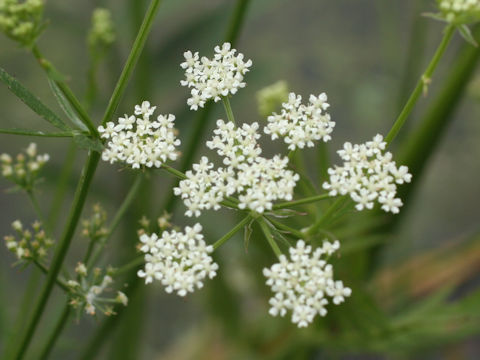

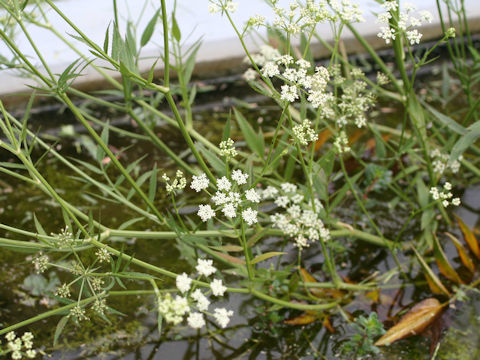

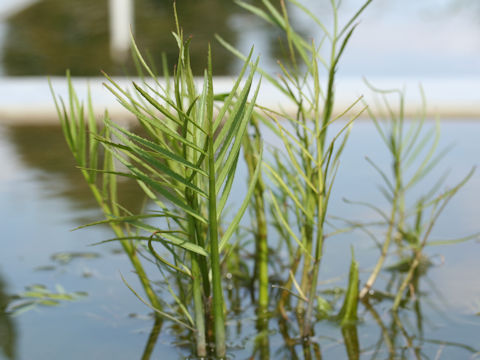

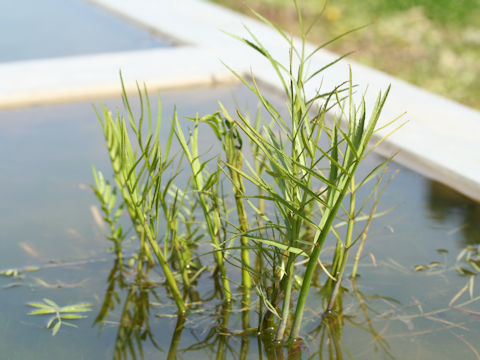

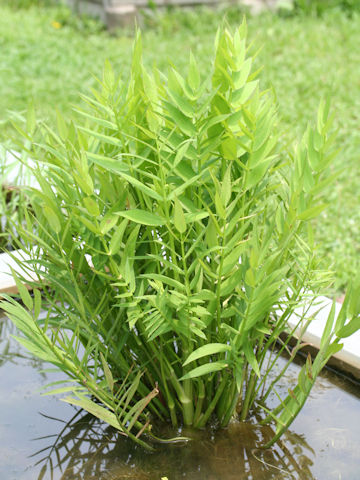

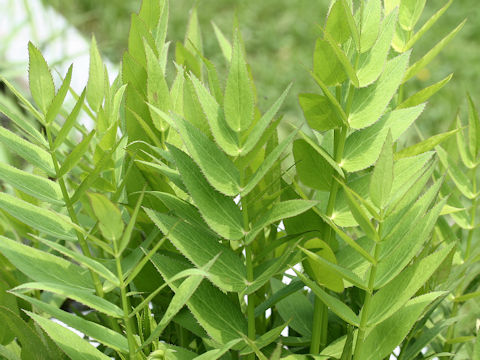

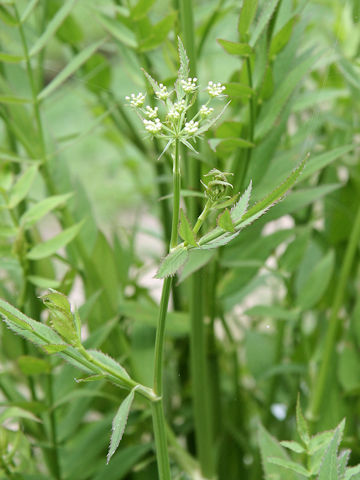

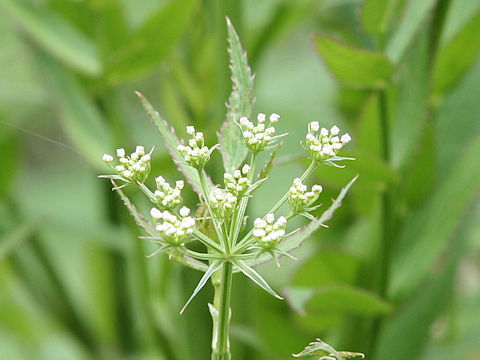

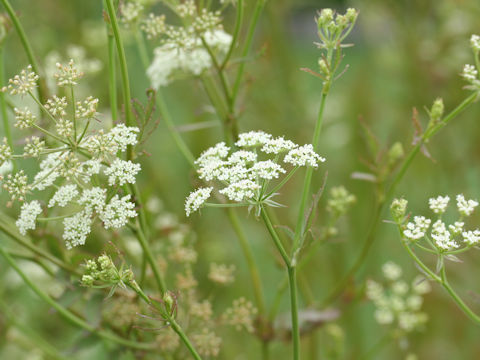

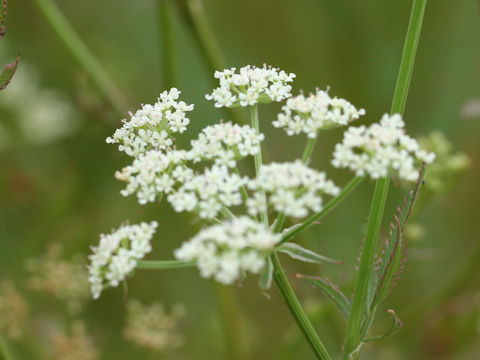

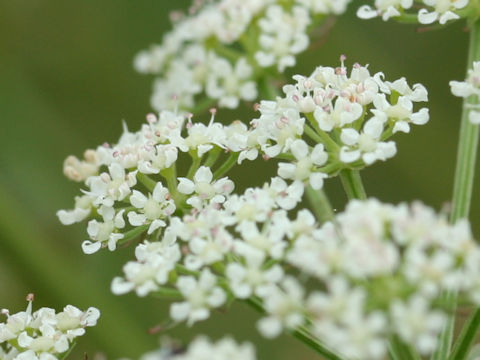

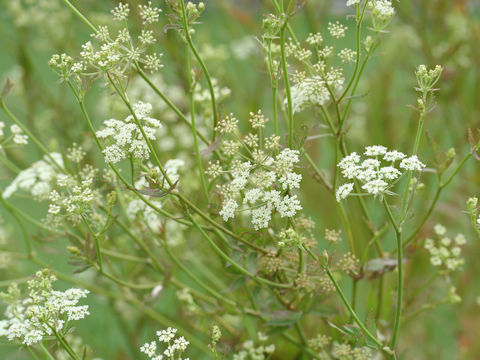

|

|
わが国の各地をはじめ、朝鮮半島や中国東北部に分布しています。低地の湿地や池などに生え、高さは60~100センチになります。葉は、茎の上部では3出複葉、下部では単羽状複葉です。小葉は狭卵形で縁には粗い鋸歯があります。7月から9月ごろ、茎の上部で分枝して、枝先の複散形花序に小さな白色の花をいっぱい咲かせます。花弁は5個で内側に曲がります。別名で「さわぜり(沢芹)」とも呼ばれます。
|

|
セリ科ヌマゼリ属の多年草で、学名は Sium suave ssp. nipponicum。英名はありません。
|

|
"Numa-zeri" (Sium suave ssp. nipponicum) belongs to Apiaceae (the Carrot family). It is a perennial herb that is distributed in various parts of Japan, as well as in the Korean Peninsula and northeastern China. This herb grows in lowland wetlands and ponds and can reach 60 to 100 cm in height. The leaves are trifoliate at the top of the stem and single-pinnate compound leaves at the bottom. The leaflets are narrow-ovate with rough serrations on the edges. It branches at the top of the stem and blooms a lot of small white flowers on the compound umbels at the tip of the branches from July to September. The five petals bend inward. It is also called "Sawa-zeri" by another name.
|

|
[上・中1~2] 大阪府交野市「大阪市大付属植物園」にて、2005年09月14日撮影。
[中3・中4] 同上にて、2006年04月06日撮影。
[中5・中6] 同上にて、2006年06月21日撮影。
[中7・中8] 同上にて、2006年07月22日撮影。
[中9~11・下] 同上にて、2006年08月19日撮影。
|














